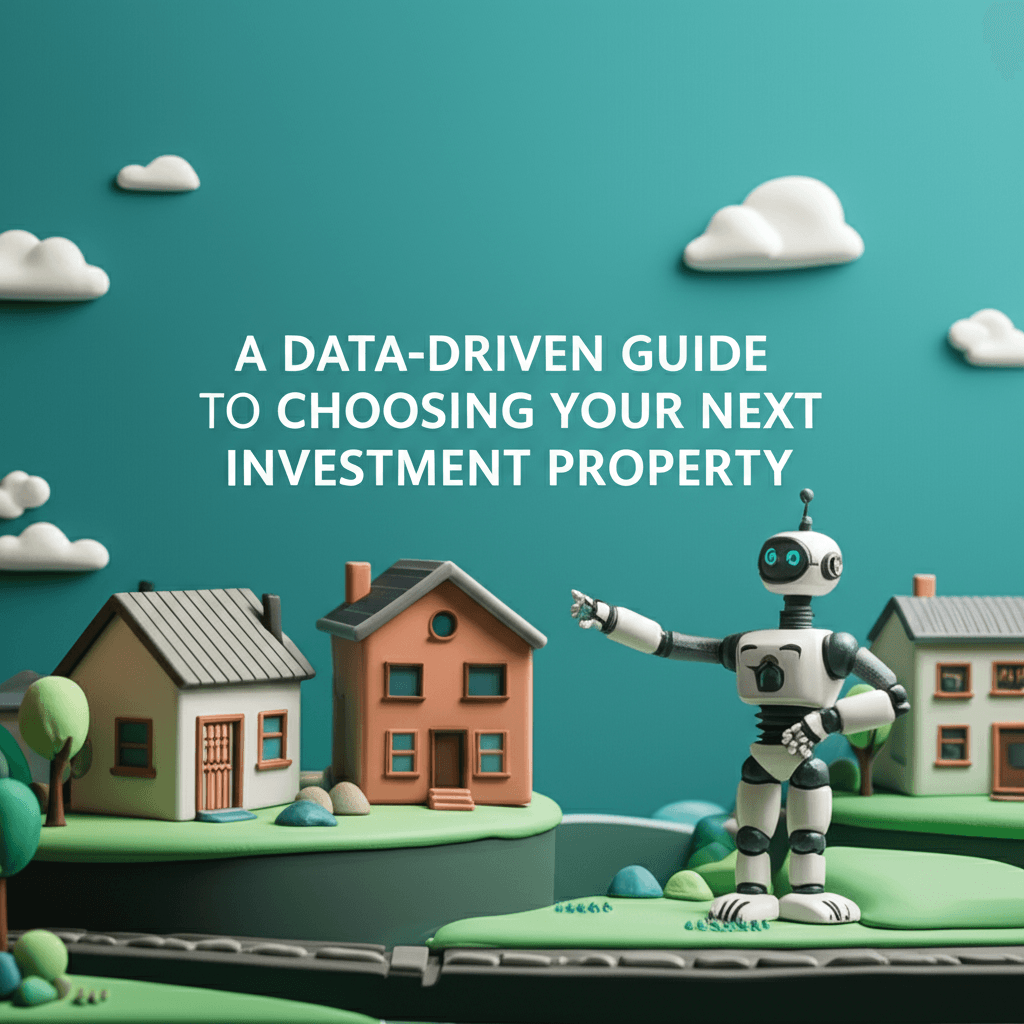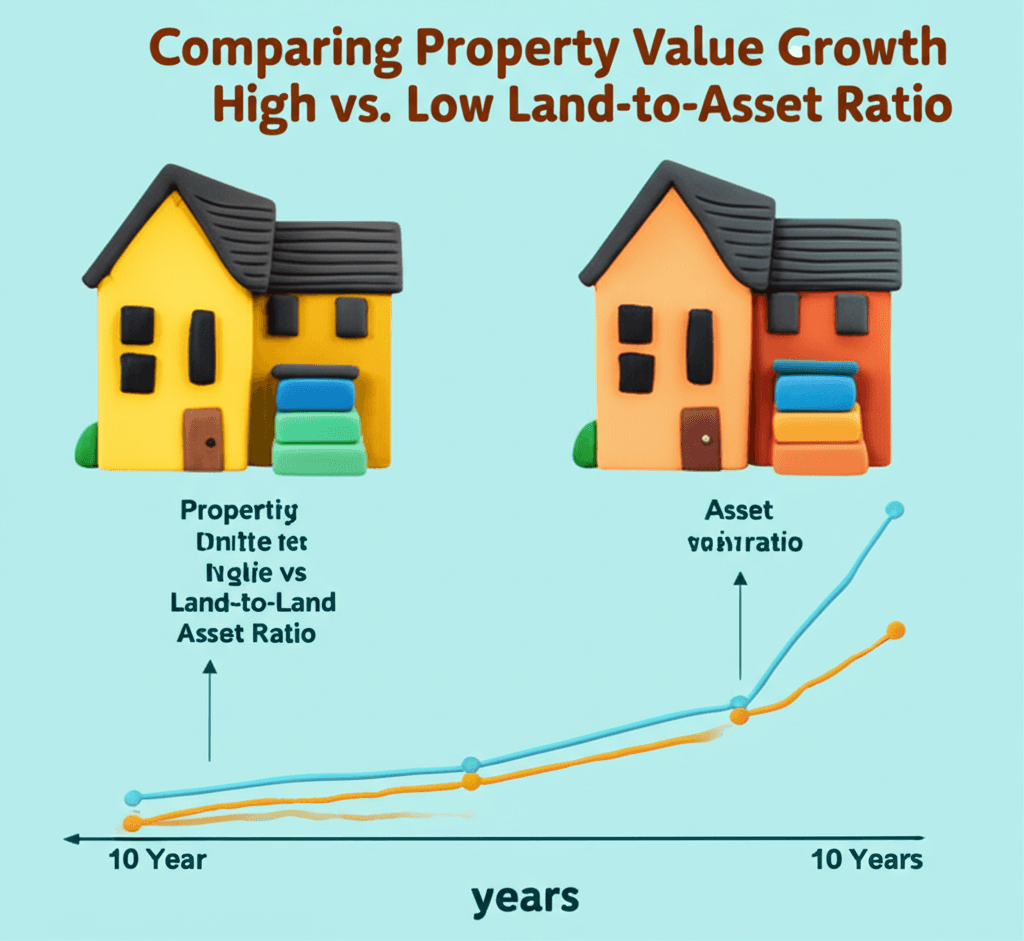A Data-Driven Guide to Choosing Your Next Investment Property
Learn to evaluate residential, commercial, and vacant land options to maximise capital growth and minimise risk in the Australian market.

Introduction
Navigating the Australian property market in mid-2025 can feel overwhelming. With conflicting headlines, rising interest rates, and a chorus of opinions, how do you decide what type of property to actually buy? For many aspiring investors, this single question leads to analysis paralysis. Drawing on over two decades of experience, this guide cuts through the noise. We'll break down the different types of property investments, expose the common pitfalls, and provide a data-driven framework to help you select an asset poised for long-term success.
The Foundation: Why Residential Property Works
For the vast majority of investors, residential property—houses and, to a lesser extent, apartments—is the ideal starting point. It's the most common and understood asset class in the country for a simple reason: people will always need a place to live. This fundamental demand creates a stable and resilient market.
Working with clients just starting out, we see a recurring theme: they seek the security that tangible property provides. In a market with chronically low vacancy rates and strong population growth, well-located residential real estate is a powerful wealth-creation vehicle.
One of the most significant advantages for a discerning investor is the sheer volume of available data. Unlike more opaque asset classes, residential real estate allows for deep analysis. With powerful real estate analytics, you can track market trends, compare suburb performance, and identify growth drivers with a high degree of confidence. This data-rich environment empowers you to make informed decisions rather than speculative bets.
The Most Important Metric: Understanding Land-to-Asset Ratio (LAR)
Before exploring alternative property types, it's crucial to grasp the single most important metric for capital growth: the Land-to-Asset Ratio. In property investing, it's the land that appreciates in value, while the building (the dwelling) depreciates over time. Therefore, you want to maximise the portion of your purchase price that is attributable to the land.
Let's illustrate with a clear example:
Imagine two properties, both priced at $600,000.
Property A (New House-and-Land Package): The land is valued at $200,000 and the brand-new house at $400,000. The LAR is 33% ($200k / $600k).
Property B (Established House): The land is valued at $400,000 and the older dwelling at $200,000. The LAR is 67% ($400k / $600k).
Now, let's fast forward 10 years, assuming the land in both locations has doubled in value.
Property A's Outcome: The land is now worth $400,000. The building, due to depreciation, has halved in value to $200,000. The total value of the property is now $600,000—zero capital growth.
Property B's Outcome: The land is now worth $800,000. The older dwelling has also depreciated, now worth $100,000. The total value of the property is now $900,000—a $300,000 increase.
This powerful example shows how a higher land-to-asset ratio directly fuels superior capital growth. This is why investors should be wary of new builds where the dwelling constitutes the bulk of the price.

Exploring Alternative Property Investment Types
While established residential property is our recommended foundation, many investors are curious about other strategies. It's important to understand the unique risk-and-reward profile of each.
Commercial Property
This category includes offices, retail spaces, and industrial warehouses. The appeal often lies in higher rental yields and longer lease terms compared to residential. However, the risks are also elevated.
Pros: Higher rental income, tenants often cover outgoings, longer and more stable leases.
Cons: Higher vacancy risk (a property can sit empty for months or years), requires specialised knowledge of the target industry, and securing finance is typically more difficult. You must think like the business that will occupy the space, which is a significant research challenge.
Vacant Land and Development
Buying a block of land offers a 100% land-to-asset ratio, which is theoretically ideal. However, it's a strategy fraught with complexities.
Pros: Maximum exposure to land appreciation.
Cons: No rental income to offset holding costs (rates, interest). Lenders are often more cautious. The biggest risk is future supply; if you buy in a greenfield estate with vast tracts of land yet to be released, you could be waiting decades for significant growth. Furthermore, zoning changes are never guaranteed, and construction costs and delays can quickly erode potential profits.

Niche and High-Risk Strategies
These strategies are often promoted as shortcuts to wealth but require extreme caution and expertise.
Dual-Occupancy & Duplexes: Building a duplex or adding a granny flat can significantly boost rental yield by creating two income streams from one title. The main drawback is the potential impact on resale value, as you narrow your pool of future buyers. It also risks being caught in an oversupply if many others in the area adopt the same strategy.
Holiday Rentals (Airbnb): The allure of high nightly rates during peak season can generate impressive income. However, this is offset by longer vacancy periods, higher maintenance and management costs, and a growing crackdown from local councils limiting short-term letting. Lenders are also hesitant to rely on this variable income for serviceability.
Student Accommodation & Studio Apartments: These properties are often pushed as high-yield, cash-flow-positive investments. The reality is often poor to non-existent capital growth. Their small size and specialised nature mean lenders may refuse finance, and your only potential buyer is another investor, severely limiting demand.
Property Trusts (REITs) & Crowdfunding: These offer a low barrier to entry, allowing you to invest in property with a small amount of capital. However, you sacrifice control. A fund manager makes all decisions, and you typically don't get the same benefits of leverage that come with direct property ownership.
The Foolproof Strategy: Keep It Simple
The most reliable and time-tested path to property investment success is simple:
1. Buy a House: Free-standing houses consistently outperform units and apartments over the long term due to their superior land component. 2. Buy Established: Avoid the low LAR and 'newness premium' of off-the-plan or house-and-land packages. 3. Buy in a Built-Up Area: Focus on locations with proven infrastructure and scarcity, where vast new supply is not a threat. You can use an AI Property Search to find properties that meet these specific criteria in desirable suburbs.
By following these principles and having time in the market, you position yourself for sustainable, long-term growth without needing to engage in complex or high-risk strategies.
Conclusion
Choosing the right investment property isn't about finding a secret formula; it's about understanding the fundamentals. The core drivers of wealth creation are capital growth, positive cash flow, and low risk. For most Australian investors, this sweet spot is found in established residential houses with a high land-to-asset ratio, located in areas with strong, data-proven demand. Avoid the marketing hype around niche strategies and focus on acquiring quality assets that will serve your financial goals for decades to come.
Ready to move beyond guesswork? Explore HouseSeeker's [Real Estate Analytics Hub](https://houseseeker.com.au/features/real-estate-analytics) to uncover high-growth suburbs and make your next investment your best one.
Frequently Asked Questions
What is the most common mistake beginner investors make?
The most common mistake is chasing high rental yields at the expense of capital growth. This often leads them to purchase high-risk assets like studio apartments, off-the-plan properties, or student accommodation, which historically show very poor long-term appreciation.
Should I buy a new house-and-land package or an established home?
For investment purposes, an established home is almost always the superior choice. It typically offers a significantly better land-to-asset ratio, which is the primary driver of capital growth. New builds often have a high depreciation component and are located in areas with a high risk of future oversupply.
How can I research a property's potential for capital growth?
True potential is revealed through data. A comprehensive analysis involves examining long-term growth trends, vacancy rates, rental yields, population growth statistics from sources like the Australian Bureau of Statistics, stock on market, and upcoming infrastructure projects. Using a dedicated platform with advanced real estate analytics is the most effective way to perform this due diligence.
